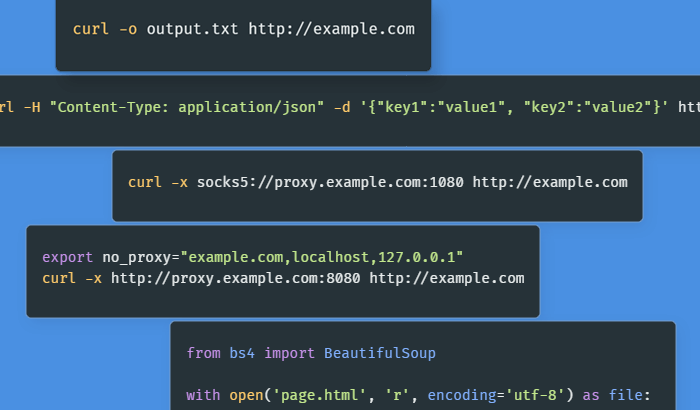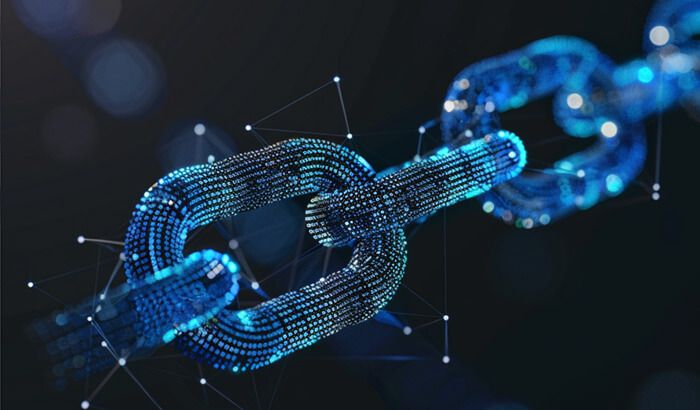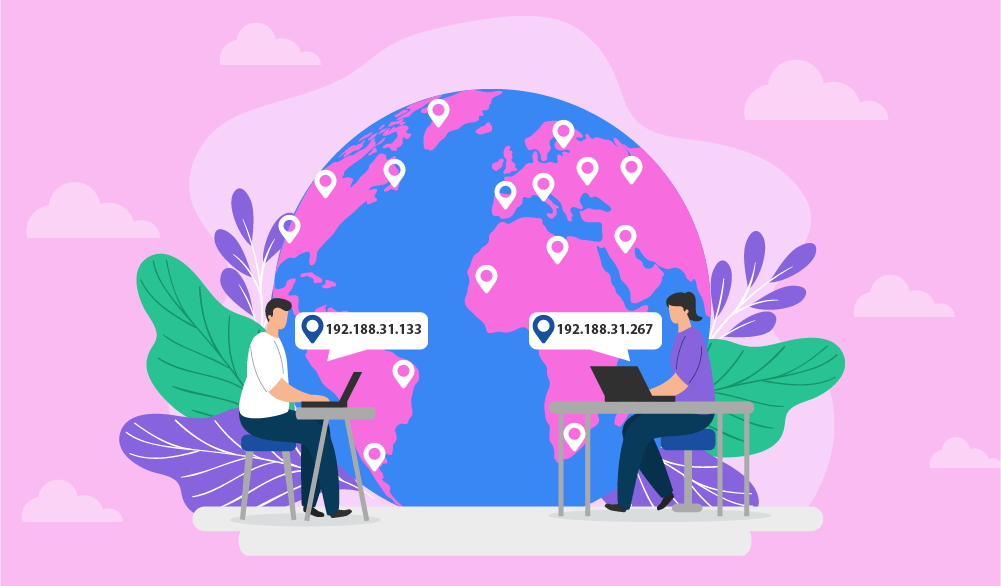

Each device that is connected to the web has an IP address — it’s an integral part of the online infrastructure that allows different devices to communicate. While we don’t usually have to think about our IP address all that much, it becomes important when we deal with proxies. The whole idea of this tool is based on IPs — proxies are created to let you change your IP address.
Knowing what IPs are and all the details about them will be useful for any Internet user. And let’s be fair, we all use it daily. But if you want to start working with proxies and try web scraping, it’s crucial for you to understand all nuances of IP addresses — let’s learn all you need to know about them.
What is an IP address?
An IP address is an electronic address of a particular device. Similar to physical addresses, IPs contain information regarding the location of a gadget — both virtual and physical. Thanks to it, websites and users know where to send the data you’ve requested, which ensures that you will see that web page you popped on or the message from your friend.
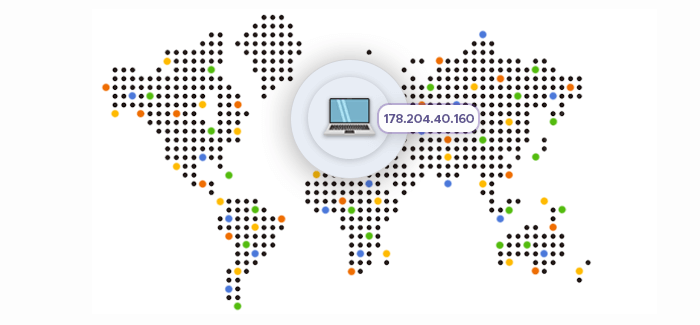
Additionally, using an IP address, we can (roughly) estimate the location of the device. It might sound intimidating, but remember that generic users don’t know your IP. Yet, if you want to hide it, Infatica proxies will be handy.
“IP” stands for Internet Protocol, which is the cornerstone of the internet infrastructure. Each IP address is issued by an internet service provider and looks like this:
146.0.222.654
Each city (and, oftentimes, even a neighborhood) has a pool of IP addresses assigned to this territory. Internet service providers then divide these IPs between all their users.
An IP address can be static, which means it remains unchanged once your device receives it unless you use proxies or ask your internet service provider for a new IP.
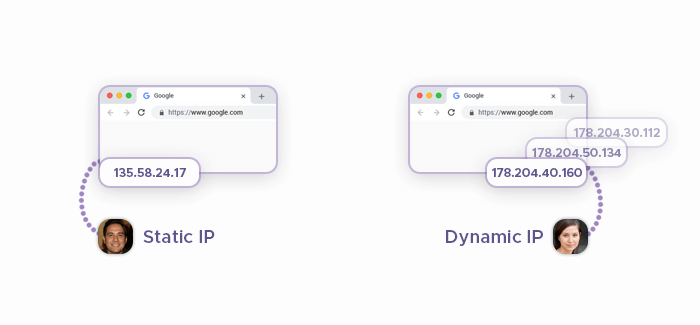
Lately, however, ISPs have been switching to dynamic IPs, which means each user receives a new IP address every few minutes. This approach allows internet service providers to improve efficiency and save costs.
What is a DNS?
A DNS goes hand-in-hand with IP addresses. It’s another protocol — a Domain Name System — that also lays the foundation for online communication.
A DNS is a part of a virtual address. Unlike the IP, it contains letters, not numbers. While an IP is used by computers, a domain is suited to humans. Since it contains letters and words, we can read and understand it easily. A domain looks like this:
Domainname.com
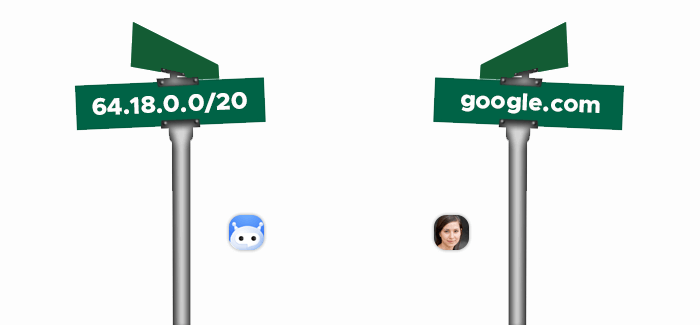
Computers use a DNS server to handle the translation of IP addresses and each computer has one or more DNS servers that are configured and assigned to it by an internet service provider. To improve the bandwidth, ISPs usually assign DNS servers that are as close to a user as possible.
The difference between IPv4 and IPv6
V4 and V6 refer to the version of an IP address. As you can tell, they stand for version 4 and version 6. Later, most likely, we will get the newer version.
IPv4
The Internet Protocol version 4 was launched back in 1981. And as you can guess, there were the first, the second, and the third versions before it. The fourth version allowed an IP to be used worldwide and be public. It uses 32 bits that allow this version to create around 4.3 billion unique IP addresses.
Obviously, sooner or later this huge pool of IPs had to become exhausted, so the need for a newer version emerged. In 2019, just one million IPv4 addresses were left.
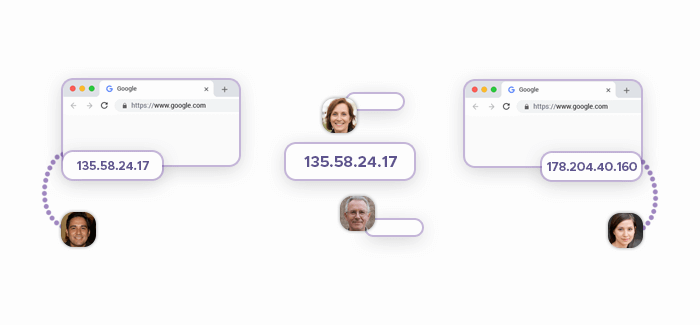
IPv6
The sixth version of the protocol was introduced in 2012. It uses 128 bits that allow it to create an enormous number of IP addresses — 340,282,366,920,463,463,374,607,431,768,211,456. This should cover our needs for the foreseeable future.
Private and public IPs
In addition to static and dynamic IP addresses, there are two more types — public and private. A private IP is assigned to devices connected to a wireless network through a router using the DHCP (Dynamic Host Configuration Protocol.) This IP allows the router to tell gadgets apart, and no one outside the network can see it.
A public IP address is assigned by an internet service provider to a single device if it’s connected to the internet using a cable, or to a router. Anyone can find out this IP address, even if they are outside the network.
Therefore, if there is a router, a device will communicate with a router using a private IP, and the router will communicate with the public internet using a public IP.
The role of IP address in web scraping
When you want to access a particular website, your device sends a request to the target server, which then processes this request and sends the required data back to your device using its IP address — and that’s how a web page appears before your eyes.
A web scraper does the same thing to gather the information. It sends numerous requests to a target server. But the issue is that servers are usually protected from DDoS attacks and web scraping for safety reasons. So if the requests of your web scraper are sent from the same IP address, the destination server will detect bot-like activity and block access for this IP.
❔ Further reading: All about Bots: Definition, Use Cases, and Bot Types
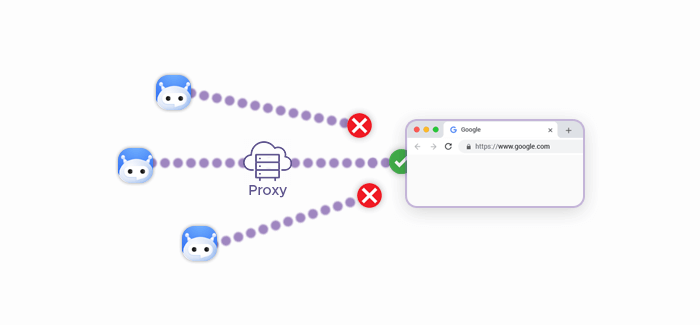
To avoid that, you should use residential proxies that are real IP addresses assigned to devices by internet service providers. Infatica offers flexible pricing plans and the opportunity to create a custom one so that you can have the number of proxies you need for your project. Additionally, proxies will help you access geo-restricted content besides just minimizing the risk of you getting blocked.
💬 Further reading: Residential Proxies: A Complete Guide to Using Them Effectively
Now you know what are IP addresses, and this knowledge will help you stay safer online and gather data more efficiently. If you need more information about proxies, dig deeper into our blog or contact us.




